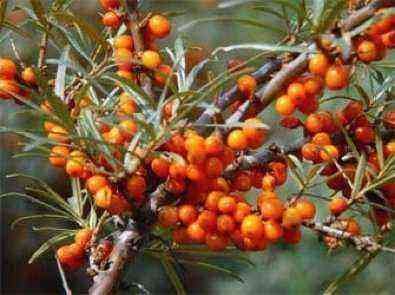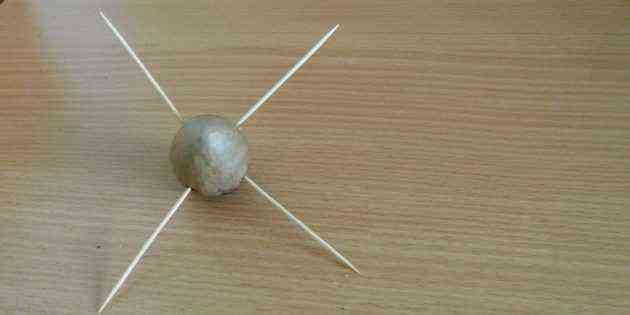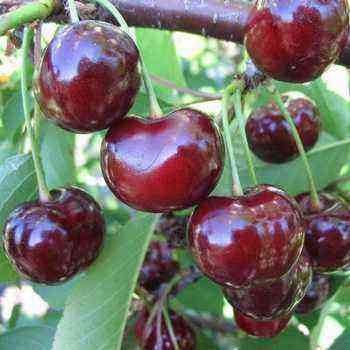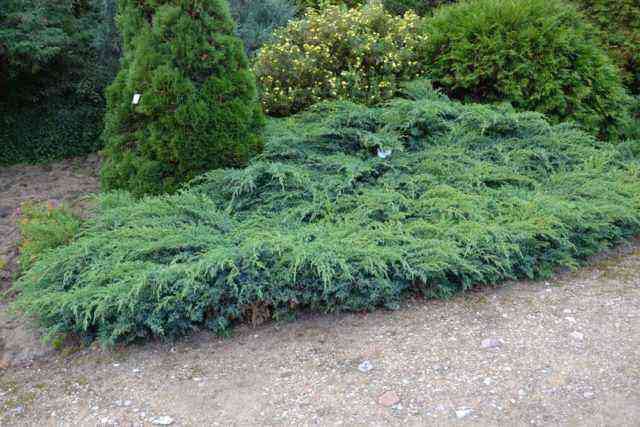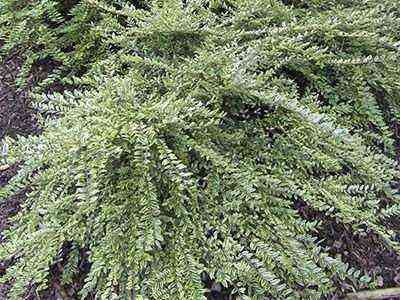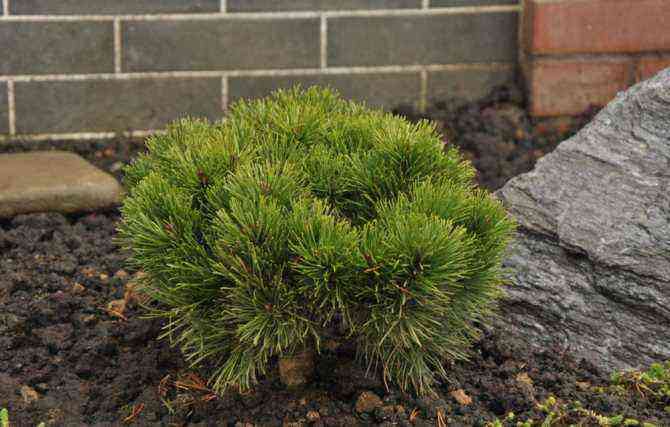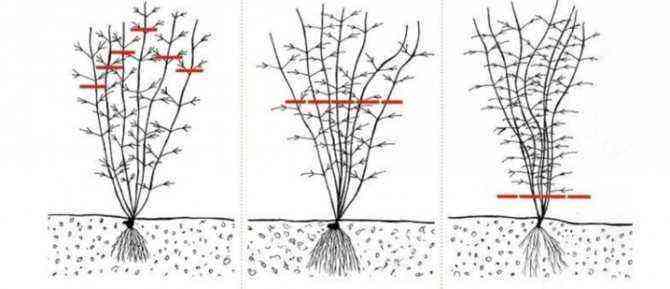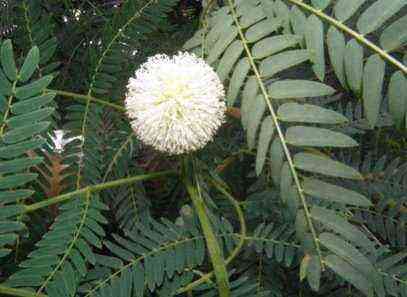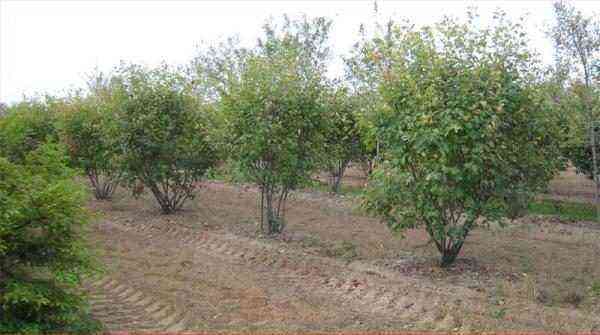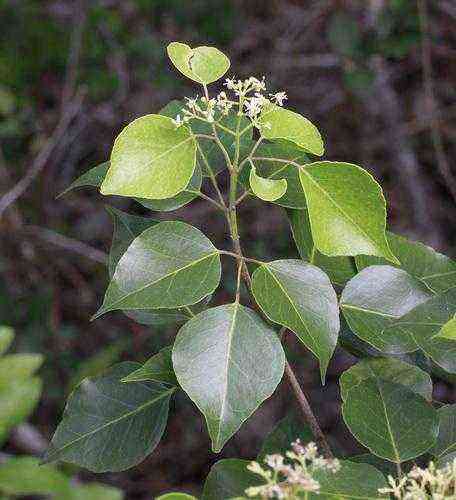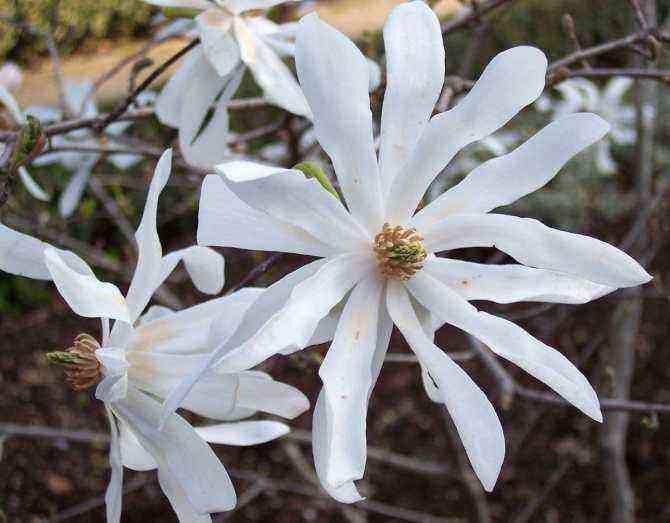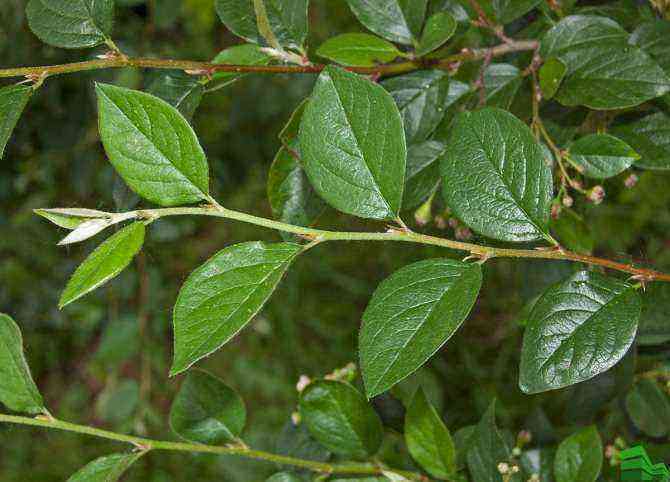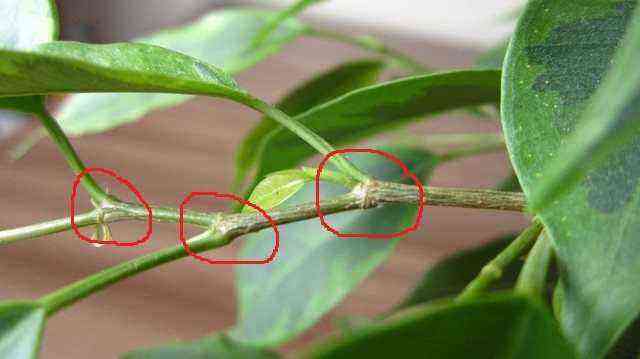 Grapefruit (Citrus paradise) is a perennial evergreen citrus plant belonging to the Rutaceae family. The birthplace of culture is Southeast Asia. Under natural conditions, it grows in the United States, Mexico, Argentina, the Middle East and the Caribbean, reaching a height of 5 to 6 m.Some varieties are real giants with a height of about 15 m.
Grapefruit (Citrus paradise) is a perennial evergreen citrus plant belonging to the Rutaceae family. The birthplace of culture is Southeast Asia. Under natural conditions, it grows in the United States, Mexico, Argentina, the Middle East and the Caribbean, reaching a height of 5 to 6 m.Some varieties are real giants with a height of about 15 m.
How a grapefruit tree grows indoors (with photo)
“Fashionable” culture became in the last century, when the dietary “grapefruit diet” became popular. Since then, its cultivation began in houses and apartments by amateur gardeners.
Indoors it grows up to 1,5-2 m. The leaves are leathery, shiny, rich green, wider than that of an orange, 10-20 cm long, slightly pubescent below, on long petioles.
Can bloom and bear fruit in the room. It blooms in spring, flowers are large, white with a pinkish tinge and strong aroma, single or collected in a cluster.
The fruits are large (300-400 g), their peel is quite thick (from 1 to 1,2 cm). They are distinguished by the presence of tasty and juicy pulp. The fruits ripen in late October – November.
It is best to grow young specimens in a room on the windowsills. Adult plants feel most comfortable in greenhouses, conservatories or office buildings.
What a blooming and fruiting grapefruit looks like is shown by the photos below – check them out to get a visual idea of this “green pet”:
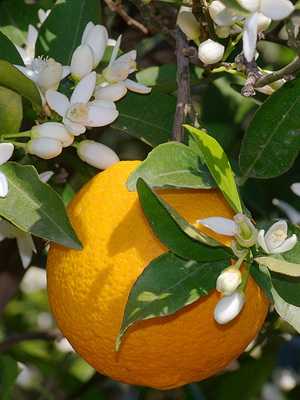

Characteristics of species and varieties of grapefruit: photos and description of plants
Depending on the color of the fruit pulp, grapefruits are divided into the following types: red and yellow (white) with a yellowish pulp. Within their limits, about 20 varieties of crops have been bred, which, in addition to the color of the pulp and peel, also differ in the number of seeds contained inside. There are even varieties that have no bones at all.
The best varieties are considered to be:

Grapefruit “Rio Red”.
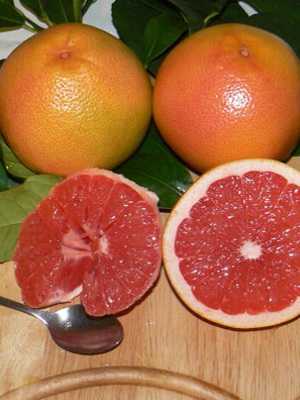
“Flame”.
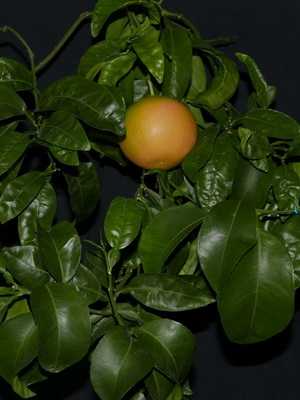
Star Ruby.
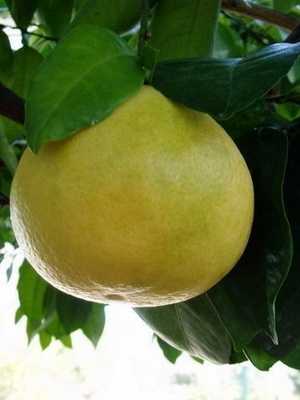
Duncan grapefruit.
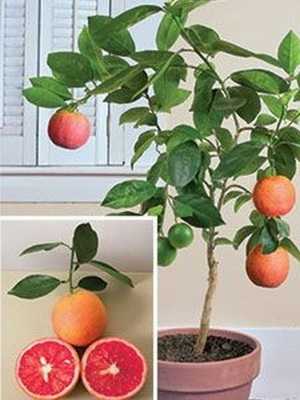
Grapefruit “Red”.
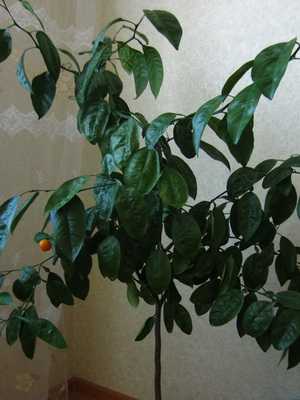
Grapefruit “Marsh”.

Ruby red grapefruit.
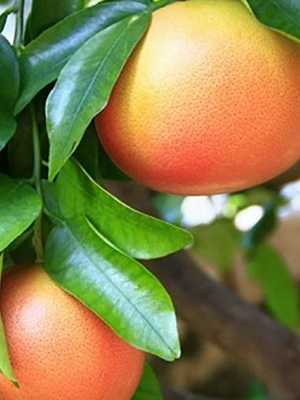
Grapefruit “Flame”.
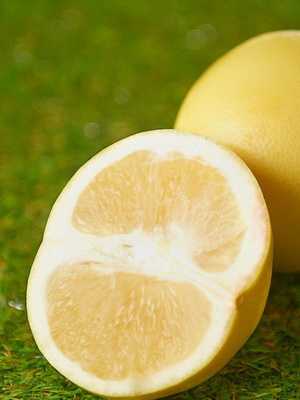
Grapefruit “White”.
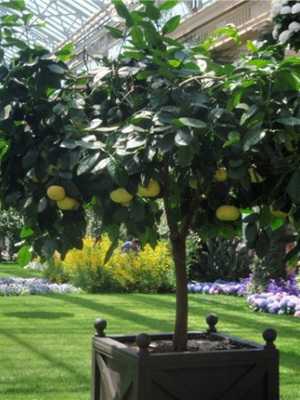
Oroblanco.

Melogold.
The first three names on the list are American hybrids. They were bred in Texas on the basis of a red variety patented in 1929 called “Ruby”.
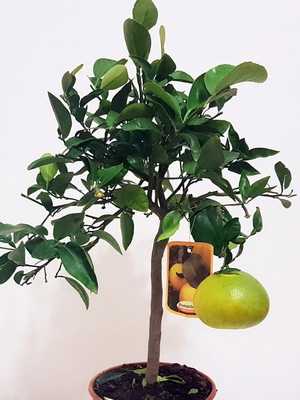
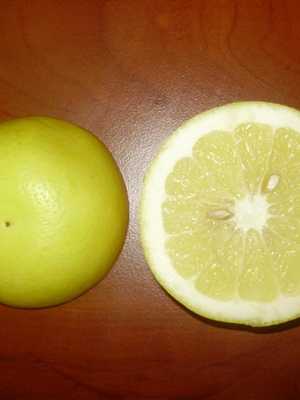
“Duncan” considered one of the oldest and most popular on the market. Unlike those named above, he is a representative of white grapefruit. The variety is famous for its large fruits, the shape of which can vary from spherical to flattened at the “poles”. It is characterized by a medium thickness skin with a smooth surface. The pulp is pleasant to the taste, has a persistent aroma, contains seeds, and is used for making juices. By the timing of ripening, the fruits belong to the mid-early group. The trees are famous for their high frost resistance and abundant fruiting.
The specificity of the “Red” variety is the absence of seeds in the pulp, the shade of which varies from light pink to deep red.


At the end of the season, its color may fade, becoming beige. The description of the fruit of this grapefruit is supported by colorful photos – check out its appearance as a whole and the cut state.

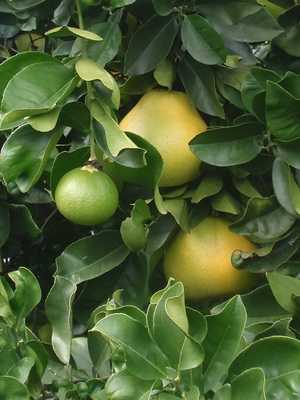
Grapefruit “Marsh” – another of the old variations of the plant, which has medium-sized fruits with a pale yellowish, juicy, tender, soft, fragrant pulp, covered with a yellow rind with a smooth texture. There are very few bones inside. The fruit has a very specific taste – sweet with sourness, so it is used to make juices.

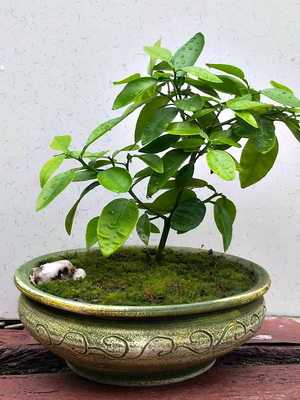
Grapefruit “Ruby red” has a special color peel – yellow, dotted with pigmentation of a bright red hue. The skin is quite hard and smooth. The pulp inside does not contain seeds, is colored red, and is famous for its sugary taste. Pay attention to the photo – they show how a tree with the fruits of this grapefruit looks like:
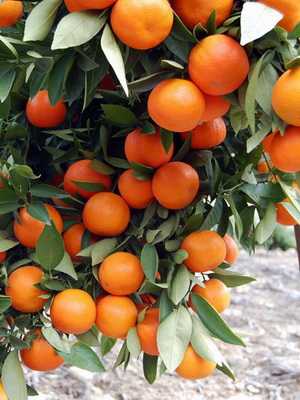
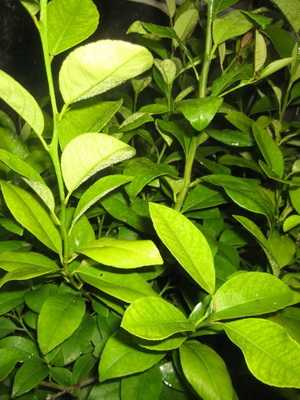
Grapefruit “Flame” – another representative with a pigmented skin. Its base is colored yellow, the spots are red. The texture is perfectly smooth. The pulp has a deep red hue, a high level of juiciness and sugar content. The bitter taste typical for grapefruits is completely absent, for which this variety is loved all over the world.
The distinctive characteristics of white grapefruit are smooth, light yellow, thick rind and tender, yellowish-white, juicy, pitted flesh. Due to their sweetness, the fruits have become indispensable as a decoration for fruit salads, snacks, raw materials for juice. Check out the appearance of the ripe fruit and tree of the “White” grapefruit in the photos below:
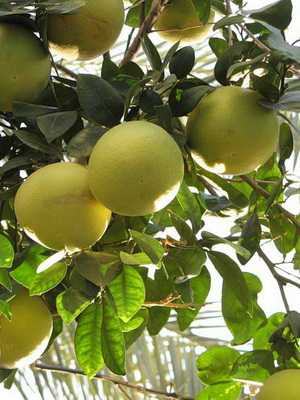
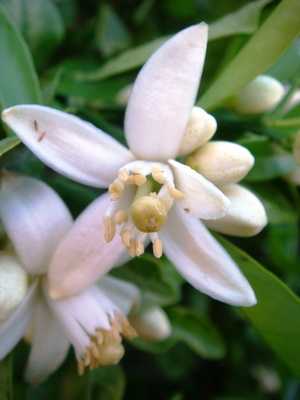
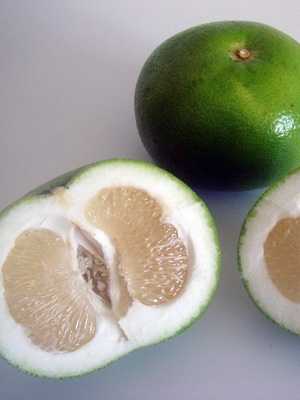

“Oroblanco” differs from its counterparts in fruits that are much smaller in size and weight. At the same time, their peel is thicker, and the white flesh is sweeter. The variety belongs to seedless crop varieties.
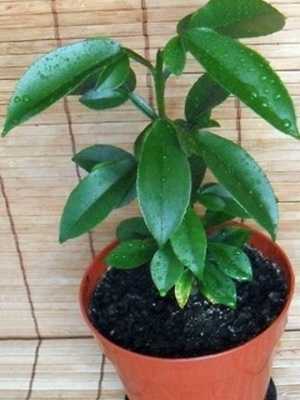
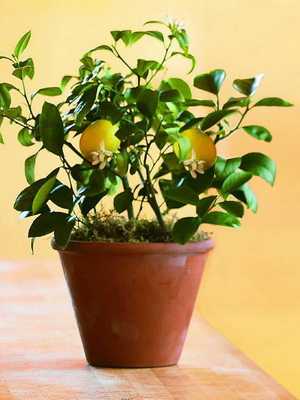
“Melogold” – also grapefruit without seeds inside. His homeland is the USA, California. Less heat demanding than other varieties. The peel is relatively thin, the weight and size of the fruits are quite impressive. Grapefruit “Melogold” is a citrus with a pulp that is very sweet in taste and has a tart aftertaste.
Other popular varieties:
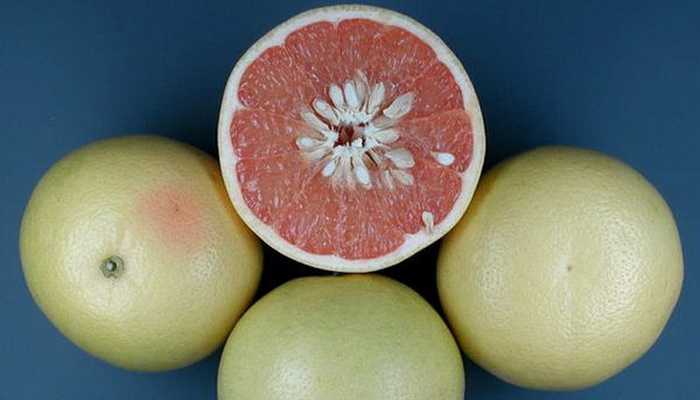
Grapefruit “Duncan Foster” (“Duncap Fosteriana”) – fruits with pink pulp;
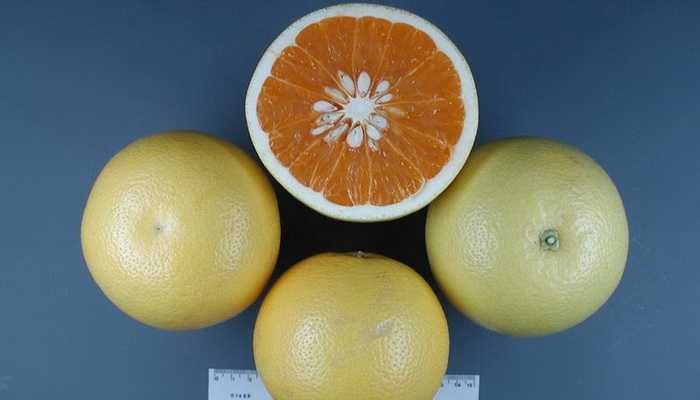
Grapefruit Thompson (C. paradise var. Tompsonii) – blooms in spring, fruits ripen in November – December.
How to grow grapefruit from seed and cuttings at home
The simplest and most common way to breed most grapefruit varieties is from seed. To do this, you need to select fully ripe fruits and extract seeds from the pulp that have the correct shape. To get a 100% result, it is recommended to plant several seeds at once, since not all of them may be viable.
It is not necessary to pre-dry the seeds: after removing them from the pulp, they can be immediately placed in the soil, poured into small flowerpots (for each bone there is a separate container). The substrate in this case will be a mixture of flower soil and peat, taken in a 1: 1 ratio. It is also recommended to add some river sand.

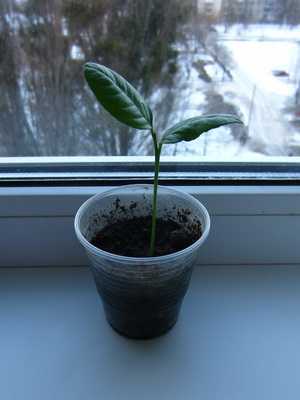
To grow a grapefruit from a seed, the seed should be deepened by 2 cm and poured with a little water at room temperature. Then the flowerpot must be covered with a transparent plastic bag and removed to a warm and well-lit room.
You need to open the mini-greenhouse for airing every day, and water it as the top layer of the soil dries out. Seedlings, subject to these rules, should appear on the 14-21st day.
As soon as the first pair of leaves bloom, the polyethylene is removed, making sure that the direct rays of the sun do not fall on the plant. But the room should still be warm and light.
Growing a room grapefruit at home from a stone means transplanting a tree into a large container as soon as its height reaches from 10 to 13 cm.When performing the procedure, you need to ensure that the roots that have not yet matured remain unharmed.
A young grapefruit grown from a seed at home is shown in the photo – appreciate the beauty of the plant, which is obtained by following the recommendations described above:
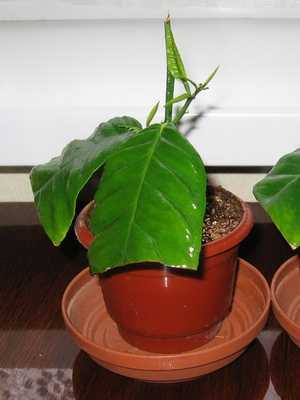

Seedless varieties are propagated by cuttings. The procedure is recommended to be carried out in March – April or June – July. It is necessary to cut cuttings from 8 to 10 cm long, which have 6 leaves. Before growing grapefruit from cuttings at home, the propagation material should be placed in moistened river sand and covered with polyethylene on top. In order for rooting to occur as quickly as possible, it is recommended to maintain a temperature regime in the mini-greenhouse in the range from +23 to +25 ̊С. After the roots appear (it often takes about 2-3 weeks), you can plant the cuttings in a soil mixture of leafy and soddy soil, humus and sand (2: 1: 1: 0,5), laying a drainage layer on the bottom of the flowerpot. Lighting, location, watering the seedling need the same as if you decided to grow a grapefruit from the seed.
Reproduction by vaccination is possible. Can be grafted onto home-grown grapefruit seedlings. Fruiting occurs in the 4th-5th year.
This procedure can be started exclusively in the spring – until the beginning of May. At this time, the most intensive movement of juices in the plant and growth processes are observed. Slices on the scion and rootstock should be made with a sharp tool, each of them carried out in one even and quick movement. The cambial layers of the scion and rootstock are connected with maximum accuracy, and for this the diameter of the sections must be approximately the same.
The junction is tightly pressed, wrapped with a soft insulating tape.
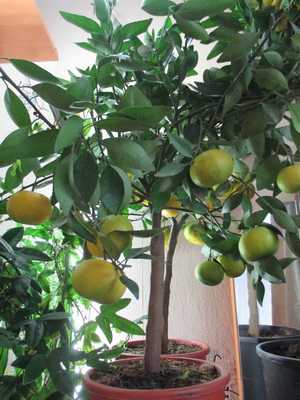
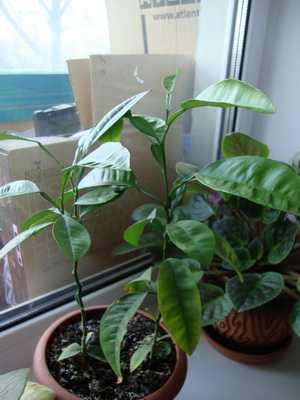
When asked how to grow a strong and healthy grapefruit, experienced gardeners answer: provide the scion with high humidity. To do this, it is recommended to wrap a bag under the junction, wind a moistened cotton swab or a piece of sphagnum moss next to the graft, fix the bag so that the scion is located inside it. Then the chances of a successful vaccination will increase significantly.
How to plant a grapefruit in a new pot
Plants up to 5-6 years old are transplanted annually, then – once every 3-4 years. This procedure is necessary if the root system fully assimilates the soil in the pot and begins to protrude from the holes at the bottom of the flowerpot.
An adult plant needs to be poured with fresh substrate annually. For transplanting, you need to use loose fertile soil with a neutral acidity index. Good for indoor grapefruit tree and ready-made substrate “Lemon”. You can prepare the planting soil yourself from leafy and sod land, humus and sand (2: 1: 1: 0,5). It is important that it is saturated with all the necessary trace elements (boron, cobalt, manganese, zinc, etc.) and macronutrients (nitrogen, potassium, calcium, copper, magnesium, sulfur, phosphorus). It is also recommended to put a couple of nails in the substrate, since subtropical and tropical plants require iron in the soil. Under the influence of acidic secretions from the roots, macronutrients will be released from the nails, absorbed by the plant.


Before planting a grapefruit in a new flowerpot, a drainage 5 to 8 cm thick must be laid on the bottom of the container so that excess water does not stagnate in the root system during watering and does not cause rotting. This layer can consist of fine gravel, foam, expanded clay.
For transplanting, a transshipment method is used, in which the soil on the roots is not disturbed, but transferred to a new pot. The void is filled with fresh substrate. This method provides minimal trauma to the root system of the plant.
Travel conditions for grapefruit: watering, fertilizing and pruning
Grapefruit needs a bright, sunny window. In summer, before the onset of frost, the plant can be kept in the garden, on the balcony, on the open terrace. In winter – in a bright room. The total duration of daylight hours when growing indoor grapefruit should be from 10 to 12 hours.
It is better to place the flowerpot on the east or west windowsill. If the pot is on the south window, then you need to take care of shading it at noon. On the windowsill facing the north side, you will have to use a phytolamp to organize additional lighting. In autumn and winter, additional lighting will be needed in any case, regardless of the location of the container with the plant.
In the spring-summer period, the optimal temperature regime for the culture is within + 20 … + 27 ° С, in winter, coolness is needed – from +4 to +8 ° С. We grow grapefruit in such conditions at home – and it will delight you with abundant flowering and fruiting.
Optimum indicators of air humidity for the culture are average: from 50 to 60%. To increase it in hot weather, it is recommended to spray the plant with a spray bottle every day using soft water at room temperature. A warm tree shower is also acceptable.
Watering is needed regularly, in summer it is plentiful, but water stagnation should not be allowed, otherwise the soil will swamp, and the roots will rot. Due to the drying out of the substrate, the culture may also die.


Home care for grapefruit provides: if there is a strong heat outside the window, watering should be daily, if the temperature is moderate – as the top layer of the soil dries out. In winter, the frequency of irrigation is significantly reduced – due to the coolness, the soil will dry out more slowly.
For humidification, take river or distilled water at room temperature. If it is not possible to obtain such a liquid, then you can use ordinary tap water, but it must first be filtered or defended for a couple of days.
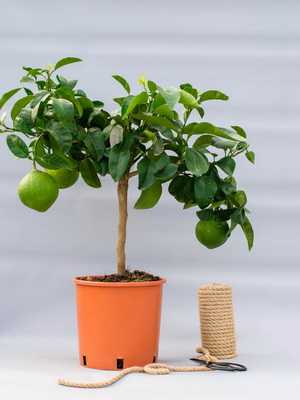

Growing a grapefruit tree at home involves regularly applying fertilizers to the substrate. Plants are fed from April to September, twice a month, with complex fertilizers suitable for citrus crops. If the tree is kept in a room with a low temperature during the winter, then feeding completely stops. If the temperature is higher than the recommended one, fertilizing should be applied, but once every 30 days.
Look at the photo depicting a grapefruit grown at home, subject to the described conditions of detention and care rules:
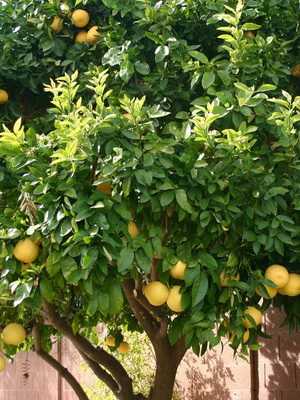
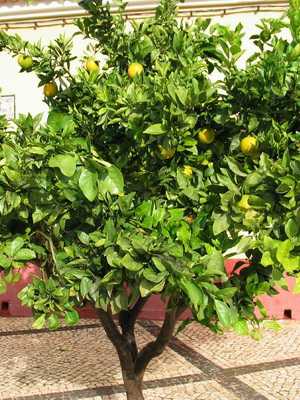
This is an important aspect of tree care. It often reacts positively to the procedure – 2 new ones grow in the place of the cut off shoot. It is immediately recommended to decide on exactly what height the tree needs to be obtained. Further, it is necessary to leave no more than 2 or 3 bearing branches, above which the crown should be placed. Maintain the neat appearance of the plant by pruning it annually. How the crown of a grapefruit grows, is formed, study the photos below – they clearly demonstrate how to trim:

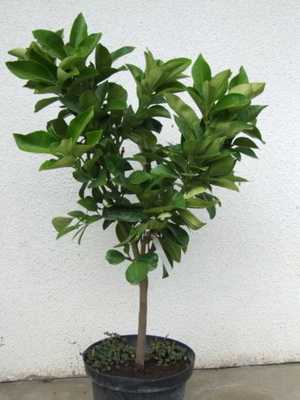
Pests and diseases of grapefruit
Most often, the plant suffers from pests such as:
- Mealybugs.
- Shchitovki.
- Red spider mites.
The fact that one of them attacked a tree is evidenced by the appearance of a thin web, a sticky sugar coating, brown, gray spots, deformations of leaf plates along the edge and punctures throughout their area, yellowing of foliage and its falling off.
To get rid of the parasites, you need to immediately sanitize the home-grown grapefruit. There are several effective methods of fighting parasites – this is the use of one of the solutions:
- Soapy (30 g of laundry soap per 10 liters of water).
- Alcoholic (pharmacy calendula infusion).
- Oil (2 drops of rosemary essential oil in 1 liter of water).
The agent used must be impregnated with a cotton pad and with its help remove insects from the plant. If there are many of them, it is better to spray the crown with the selected solution. In case of excessively intense damage, one should resort to treatment with insecticides (“Aktellik”, “Aktara”). They should be used strictly according to the instructions contained in the package. It may take a couple of weeks to re-process the crown of a homemade grapefruit tree, if after the first the pests do not completely disappear.
Among the diseases of culture, infections of a viral and fungal nature are the most common:
- Gum therapy.
- Atracnose.
- Wart.
Symptoms of gum flow are the dying off of the bark at the base of the trunk and the appearance of a light yellowish liquid on its surface. To get rid of the disease, the diseased areas of the bark must be removed with a sharp knife to living tissues, and these areas on the tree must be treated with a garden varnish.
To overcome fungal diseases of home grapefruit, which are wart and atracnosis, treatment of the crown with such a drug as Fitovir, or the well-known Bordeaux liquid, helps.
Tips for keeping grapefruit at home (with video)
The plant is very sensitive to conditions. If you violate the rules for growing grapefruit at home, the culture can be significantly affected or even die.
If during the period of winter dormancy the temperature regime is excessively high, the growth of the tree will not stop. In this regard, it expects a significant depletion and further slowdown in development in the spring-summer period, the absence of color and, accordingly, fruits.
If the soil is overmoistened or overdried, most likely, the color, foliage or fruits will begin to crumble (depending on the current stage of crop development). Due to stagnant water in the roots, brown spotting develops and leaf fall begins.
Lack of fertilization leads to a slowdown in tree growth. This can be judged by observing how intensively the indoor grapefruit grows during the active phase. But it is also not worth overdoing it with feeding, otherwise the plant will begin to turn yellow and wither. For example, due to an excess of calcium in the soil, the absorption of many other essential macro- and microelements by the root system will be blocked.
If the ambient humidity is too low, the plant responds to the disturbance in growing conditions with dry leaf tips.
The characteristic of homemade grapefruit, which received a sunburn due to direct rays hitting the crown, is as follows: the leaf plates on the side that was turned towards the sun are covered with a whitish spot.
It is important to take into account one more point: the tree reacts negatively to frequent and abrupt movements from one place of growth to another, and even to turning. As a result, the color, ovaries, part of the leaves may fall off.
Experienced gardeners will share key secrets on how to raise a healthy and robust “green pet” that regularly delights with tasty fruits.


